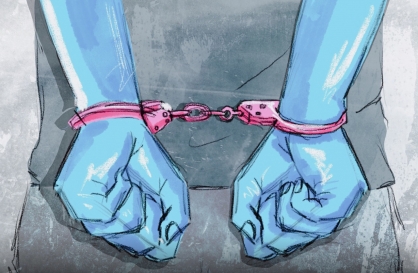MMCA rolls out mid-term plan, incorporation plan scrapped
By Shim Woo-hyunPublished : June 27, 2018 - 17:48
The National Museum of Modern and Contemporary Art of Korea on Tuesday laid out the museum’s mid-term plan, including its future exhibition schedule and management plan.
The mid-term plan was announced alongside the Ministry of Culture, Sports and Tourism’s recent decision not to incorporate the museum, ending a decade of debate on the issue.
While there have been talks of incorporation to free the museum from regulations and restraints of being a part of a governmental branch, there were also concerns over whether the MMCA would be able to raise enough funds on its own to cover operating costs.
The mid-term plan was announced alongside the Ministry of Culture, Sports and Tourism’s recent decision not to incorporate the museum, ending a decade of debate on the issue.
While there have been talks of incorporation to free the museum from regulations and restraints of being a part of a governmental branch, there were also concerns over whether the MMCA would be able to raise enough funds on its own to cover operating costs.

As the Culture Ministry officially nullified the incorporation plan, the museum now aims to move ahead in preparing systematic changes required for a public museum.
MMCA Director Bartomeu Mari said the most important thing to be done for the museum now is to install the “ABCs of museum management.” Adding that the MMCA still has a long way to go on some its standards, Mari emphasized, “Most of the problems of the museum can be solved by making plans ahead.”
It is often the case for overseas museums to be scheduled three to five years ahead, said the museum’s officials. When hurriedly preparing exhibitions, the museum can face difficulties in ensuring the quality of exhibitions, and sometimes takes the risk of wasting budget that could be saved otherwise. When the programs are scheduled ahead, it can also counter risks that come as directors change. Over the last 10 years, the museum has had four directors.
The museum hopes to stabilize its programs and research capability, particularly through securing the human resources required. However, acquiring sufficient resources itself is a sizable challenge that puts a dent in those high hopes.
In regards to employment, the Culture Ministry will soon commence discussions with the Ministry of the Interior and Safety, according to Park Wi-jin, the director of the museum’s planning and management.
The first agenda item will be on transferring temporary curator positions to permanent ones -- perhaps in line with the administration’s approach with the job issue. The MMCA has previously been criticized over its temporary positions at the public institution.
Currently there are 32 curators on temporary contracts out of 135 curators working at the MMCA’s branches -- the museum’s newly opening National Art Conservation Center Cheongju branch not included.
The next step will be for the Culture Ministry to discuss increasing positions at the museum, Park added.
The museum’s hope is to add people needed for the museum’s business, like publication of art catalogues. The MMCA currently has some half dozen people working on its publication team -- a small number to pull off the timely publication of exhibition and research materials.
Given that sales of art catalogues factor into a great portion of a museum’s income, securing the proper number of employees may contribute to the museum’s betterment.
“At (UK national collection) Tate, about 5 percent of the total number of visitors purchase publication materials. The Metropolitan Museum of Art (in New York) is also capable of printing 100,000 copies of the first edition of something yet still selling them out,” said an industry source.
The outlook for the museum is expected to be clearer after the results of interministry discussions.
By Shim Woo-hyun (ws@heraldcorp.com)






![[Weekender] How DDP emerged as an icon of Seoul](http://res.heraldm.com/phpwas/restmb_idxmake.php?idx=644&simg=/content/image/2024/04/25/20240425050915_0.jpg&u=)


![[KH Explains] No more 'Michael' at Kakao Games](http://res.heraldm.com/phpwas/restmb_idxmake.php?idx=644&simg=/content/image/2024/04/28/20240428050183_0.jpg&u=20240428180321)








![[Herald Interview] Mistakes turn into blessings in street performance, director says](http://res.heraldm.com/phpwas/restmb_idxmake.php?idx=652&simg=/content/image/2024/04/28/20240428050150_0.jpg&u=20240428174656)
